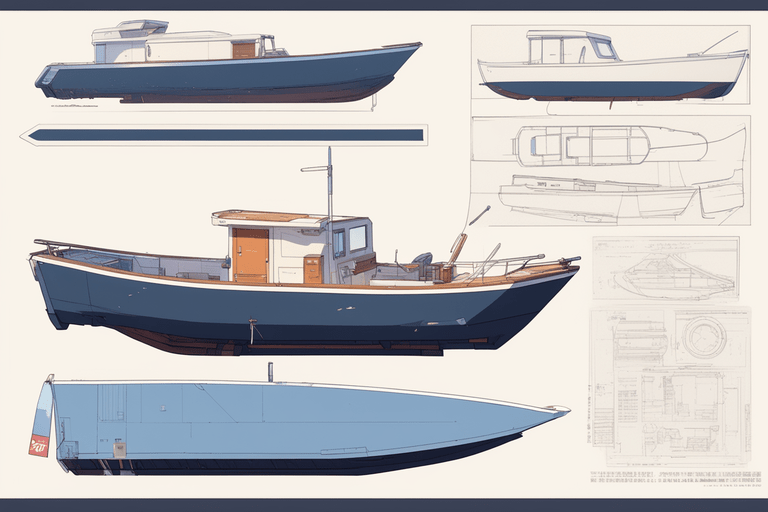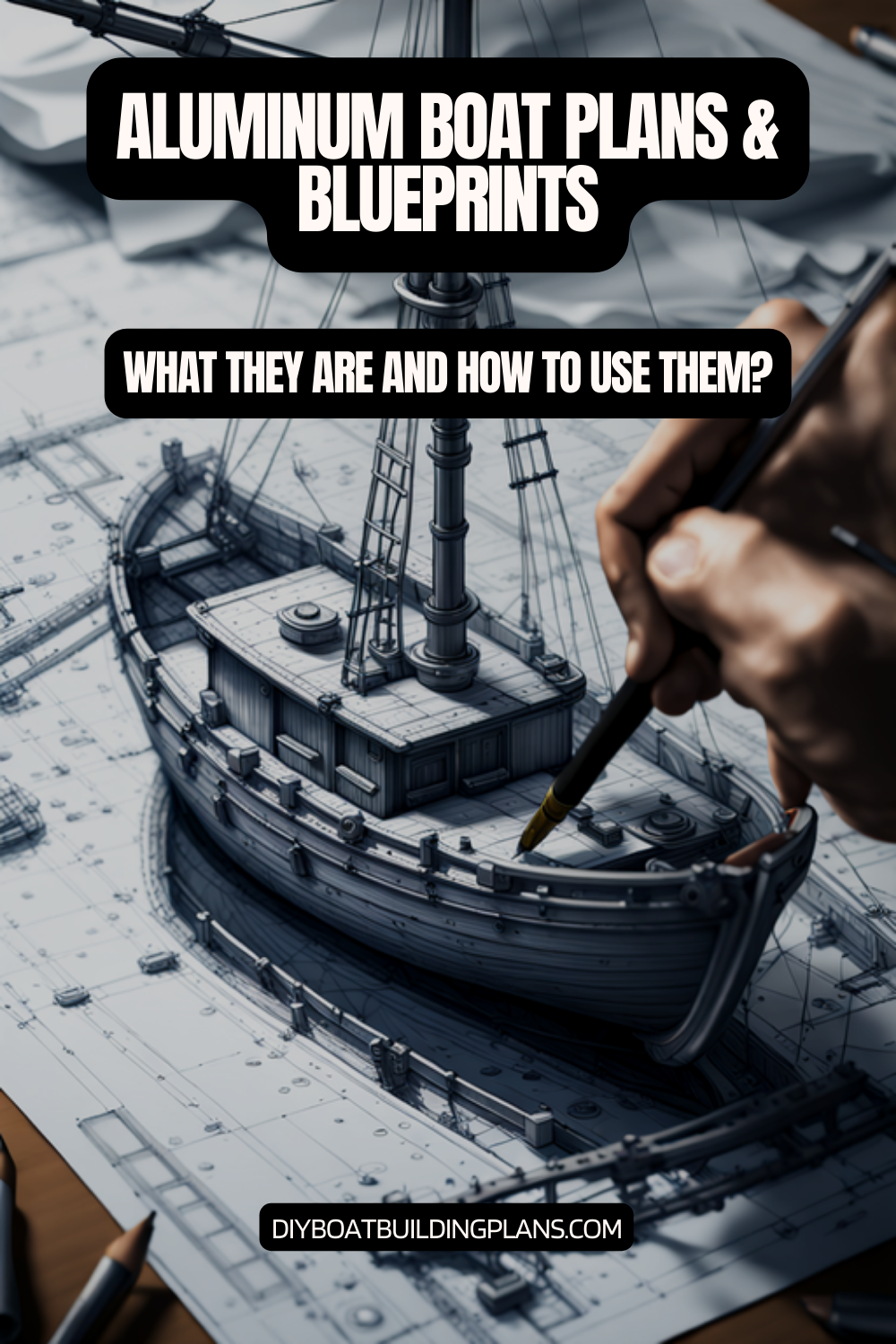Overview of Aluminum Boat Plans & Blueprints
Aluminum boat plans and blueprints are essential tools for anyone interested in building their own boat. These plans provide detailed instructions and diagrams that guide builders through the process of constructing an aluminum boat from start to finish. Whether you are a seasoned boat builder or a novice looking to take on a new challenge, having a plan is crucial to ensure a successful and efficient build.
Building a boat without a plan is like embarking on a journey without a map. It is important to have a clear vision of what you want to achieve and how you will get there. A well-designed plan will outline the necessary steps, materials, and tools required for the project, making the building process much smoother and more enjoyable.
Key Takeaways
- Building an aluminum boat has many advantages, including durability, strength, and resistance to corrosion.
- There are various types of aluminum boat plans available, including flat-bottom, V-hull, and pontoon designs.
- When choosing an aluminum boat plan, consider your skill level, budget, and intended use for the boat.
- Building an aluminum boat requires specific tools and materials, such as a welder, aluminum sheets, and rivets.
- While building an aluminum boat can be cost-effective, it’s important to properly maintain and care for the boat to ensure its longevity.

Advantages of Building an Aluminum Boat
One of the main advantages of building an aluminum boat is its durability and strength. Aluminum is known for its ability to withstand harsh weather conditions, impacts, and corrosion. Unlike other materials such as wood or fiberglass, aluminum boats are less prone to rotting, warping, or cracking, making them ideal for long-term use.
Another advantage of aluminum boats is their lightweight nature, which makes them easy to maneuver both on and off the water. This lightweight characteristic also contributes to better fuel efficiency, allowing boaters to save money on fuel costs in the long run.
In addition to durability and lightweight construction, aluminum boats require minimal maintenance compared to other types of boats. They do not require regular painting or varnishing like wooden boats, and they are less susceptible to damage from UV rays or saltwater corrosion. This low maintenance requirement translates into more time spent enjoying the water rather than performing tedious upkeep tasks.
Furthermore, building an aluminum boat offers endless design possibilities. With the use of aluminum boat plans, builders can customize their boats according to their preferences and needs. Whether it’s adding extra storage compartments, modifying seating arrangements, or incorporating unique features, the flexibility of aluminum allows for a truly personalized boat.
Types of Aluminum Boat Plans Available
When it comes to aluminum boat plans, there are various options available to suit different needs and skill levels. DIY plans are typically designed for smaller boats, such as canoes, kayaks, or small fishing boats. These plans are often more affordable and cater to those who enjoy the satisfaction of building their own watercraft from scratch.
On the other hand, professional plans are available for larger boats, such as pontoons, offshore fishing boats, or even yachts. These plans are usually more detailed and comprehensive, providing builders with step-by-step instructions and precise measurements. Professional plans are ideal for those who want to tackle a more complex project or require a larger vessel.
When considering aluminum boat plans, builders also have the option of choosing between free and paid plans. Free plans can be found online or in boating magazines, but they may lack the level of detail and support provided by paid plans. Paid plans often come with additional resources such as customer support, video tutorials, and access to a community of fellow builders.
Choosing the Right Aluminum Boat Plan for You
| Factors to Consider | Importance | Options |
|---|---|---|
| Boat Size | High | 10-20 ft, 20-30 ft, 30-40 ft |
| Intended Use | High | Fishing, Hunting, Recreation, Transportation |
| Aluminum Grade | Medium | 5052, 5083, 6061 |
| Welding Method | Medium | MIG, TIG, Stick |
| Hull Design | Low | Flat Bottom, V-Hull, Pontoon |
| Price | Low | Varies based on size, features, and customization |
Choosing the right aluminum boat plan is crucial to ensure a successful build that meets your specific needs and preferences. There are several factors to consider when making this decision.
Firstly, you need to determine the size and purpose of your boat. Are you looking for a small fishing boat for weekend trips or a larger vessel for offshore adventures? The size and purpose will dictate the complexity of the build and the materials required.
Secondly, consider your skill level in boat building. If you are a beginner, it is advisable to start with a simpler design that requires basic tools and techniques. As you gain experience and confidence, you can progress to more advanced projects.
Budget and time constraints are also important considerations. Building a boat can be a significant investment, both in terms of materials and time. Evaluate your budget and the amount of time you can dedicate to the project before committing to a specific plan.
Tools and Materials Needed for Building an Aluminum Boat
Building an aluminum boat requires a specific set of tools and materials to ensure a successful construction process. Here is a list of some essential tools and equipment you will need:
1. Welding machine: Aluminum boats are typically constructed using welding techniques, so a reliable welding machine is essential.
2. Cutting tools: These include a circular saw, jigsaw, or bandsaw for cutting aluminum sheets and other materials.
3. Clamps: Clamps are necessary for holding pieces together during the welding process.
4. Measuring tools: Accurate measurements are crucial in boat building, so invest in a good tape measure, level, and angle finder.
5. Safety equipment: Safety should always be a priority when working with tools and materials. Wear protective gear such as gloves, goggles, and a welding helmet.
As for materials, aluminum sheets are the primary component for constructing the hull and other structural elements of the boat. The thickness of the aluminum sheets will depend on the size and purpose of the boat. Other materials required may include marine-grade plywood for decking, fiberglass insulation for insulation purposes, and various hardware such as screws, bolts, and hinges.
Step-by-Step Guide to Building an Aluminum Boat
Building an aluminum boat can be a complex process, but with the right plan and guidance, it can be an enjoyable and rewarding experience. Here is a step-by-step guide to help you navigate through the building process:
1. Prepare the workspace: Clear a designated area where you can work on your boat comfortably. Ensure you have enough space to move around and store materials.
2. Gather materials and tools: Make sure you have all the necessary materials and tools before starting the build. This will save you time and prevent unnecessary interruptions.
3. Study the plan: Carefully review the aluminum boat plan and familiarize yourself with the instructions and diagrams. Understand each step before proceeding.
4. Cut and shape the aluminum sheets: Use the cutting tools to cut the aluminum sheets according to the dimensions specified in the plan. Shape the sheets as required for the hull, sides, and other structural components.
5. Weld the hull: Begin by welding the bottom of the hull, ensuring proper alignment and reinforcement. Continue welding the sides and transom, following the plan’s instructions.
6. Install structural elements: Attach bulkheads, frames, and other structural elements as specified in the plan. Ensure they are securely welded and aligned.
7. Decking and finishing touches: Install marine-grade plywood for the decking, ensuring a secure fit. Add any additional features or accessories according to your design preferences.
8. Insulation and sealing: Apply fiberglass insulation to the interior of the boat for added insulation and soundproofing. Seal any gaps or joints with appropriate sealants to prevent water leakage.
9. Paint or coat the boat: Apply a suitable paint or coating to protect the aluminum from corrosion and enhance its appearance.
10. Final checks and testing: Before launching your boat, thoroughly inspect all welds, connections, and fittings. Test for buoyancy and stability in a controlled environment.
Tips for Successful Aluminum Boat Building
To ensure a successful aluminum boat build, it is important to follow a few key tips:
1. Follow the plan: The plan is your guide throughout the building process. Take your time to understand each step and follow it meticulously.
2. Safety precautions: Always prioritize safety when working with tools and materials. Wear appropriate protective gear, work in a well-ventilated area, and take necessary precautions to prevent accidents.
3. Seek advice and support: If you encounter any challenges or have questions during the build, don’t hesitate to seek advice from experienced builders or online communities. They can provide valuable insights and solutions to common problems.
4. Take your time: Building a boat is a labor-intensive process that requires patience and attention to detail. Avoid rushing through the steps and take the time to ensure each component is properly constructed.
5. Keep a clean workspace: A cluttered workspace can lead to accidents and make the building process more difficult. Keep your workspace organized and clean to maximize efficiency and safety.
Common Mistakes to Avoid When Building an Aluminum Boat
While building an aluminum boat can be a rewarding experience, there are common mistakes that builders should avoid:
1. Overlooking important details: Carefully review the plan and ensure you understand all the instructions before starting the build. Neglecting important details can lead to structural issues or functional problems down the line.
2. Rushing the process: Building a boat requires time and patience. Rushing through the steps can result in poor craftsmanship and compromised structural integrity. Take your time and focus on quality rather than speed.
3. Using incorrect materials or tools: It is crucial to use the right materials and tools specified in the plan. Using incorrect materials or tools can compromise the boat’s performance, durability, and safety.
Cost Comparison: Building vs. Buying an Aluminum Boat
When deciding whether to build or buy an aluminum boat, it is important to consider the cost implications of each option. Building a boat allows you to customize it according to your preferences, but it requires an investment of both time and money.
The cost of building an aluminum boat will depend on factors such as size, complexity, materials used, and tools required. While building your own boat may initially seem more expensive than buying one off the shelf, it offers long-term cost savings in terms of maintenance and customization options.
Buying an aluminum boat, on the other hand, provides convenience and immediate access to a watercraft. However, it may limit your ability to customize the boat to your specific needs and preferences. Additionally, buying a new boat can be a significant financial investment, and ongoing maintenance costs should also be considered.
Ultimately, the decision between building and buying an aluminum boat depends on your budget, time availability, and desire for customization.
Download over 500 Boat Plans. Click on the link below.
-->Click Here<--
Maintenance and Care for Your Aluminum Boat
Proper maintenance and care are essential to ensure the longevity and performance of your aluminum boat. Here are some tips to keep your boat in good condition:
1. Rinse after each use: Saltwater can cause corrosion, so it is important to rinse your boat thoroughly with freshwater after each use. Pay special attention to areas prone to saltwater exposure, such as the hull and engine.
2. Regular cleaning: Clean your boat regularly using mild soap and water. Avoid using abrasive cleaners or tools that can scratch the aluminum surface.
3. Check for damage: Inspect your boat regularly for any signs of damage or wear. Look for cracks, dents, or loose fittings that may require repair.
4. Apply protective coatings: Consider applying a protective coating or wax to the aluminum surface to prevent corrosion and maintain its appearance.
5. Follow manufacturer’s recommendations: Refer to the manufacturer’s guidelines for specific maintenance requirements and recommended schedules for tasks such as engine maintenance, electrical system checks, and trailer maintenance.

Conclusion – Aluminum Boat Plans & Blueprints
Building an aluminum boat can be a fulfilling and rewarding experience for boating enthusiasts. With the right plan, tools, and materials, you can create a customized watercraft that suits your needs and preferences.
Aluminum boats offer numerous advantages such as durability, lightweight construction, low maintenance requirements, and design flexibility. By following a well-designed plan and taking necessary safety precautions, you can successfully build an aluminum boat that will provide years of enjoyment on the water.
Whether you are a seasoned boat builder or a beginner looking for a new challenge, consider exploring the world of aluminum boat plans and blueprints. Embrace the opportunity to create your own watercraft and embark on unforgettable adventures on the open seas.
FAQs – Aluminum Boat Plans & Blueprints
What are aluminum boat plans and blueprints?
Aluminum boat plans and blueprints are detailed instructions and diagrams that guide boat builders in constructing aluminum boats. These plans provide information on the materials needed, measurements, and step-by-step instructions for building the boat.
What are the advantages of using aluminum for boat building?
Aluminum is a lightweight and durable material that is resistant to corrosion and rust. It is also easy to work with and requires minimal maintenance. Aluminum boats are known for their strength, stability, and speed.
Who can use aluminum boat plans and blueprints?
Anyone who has basic knowledge of boat building and has access to the necessary tools and materials can use aluminum boat plans and blueprints. These plans are suitable for both amateur and professional boat builders.
Where can I find aluminum boat plans and blueprints?
Aluminum boat plans and blueprints can be found online or in boat building books and magazines. There are also websites that offer free or paid plans for different types of aluminum boats.
What types of aluminum boats can be built using these plans?
Aluminum boat plans and blueprints can be used to build a variety of boats, including fishing boats, pontoon boats, jon boats, and even larger vessels such as yachts and catamarans.
What tools and materials are needed to build an aluminum boat?
The tools needed to build an aluminum boat include a saw, drill, rivet gun, and welding equipment. The materials needed include aluminum sheets, rivets, screws, and other hardware. The specific tools and materials required will depend on the type and size of the boat being built.



